Measurements:
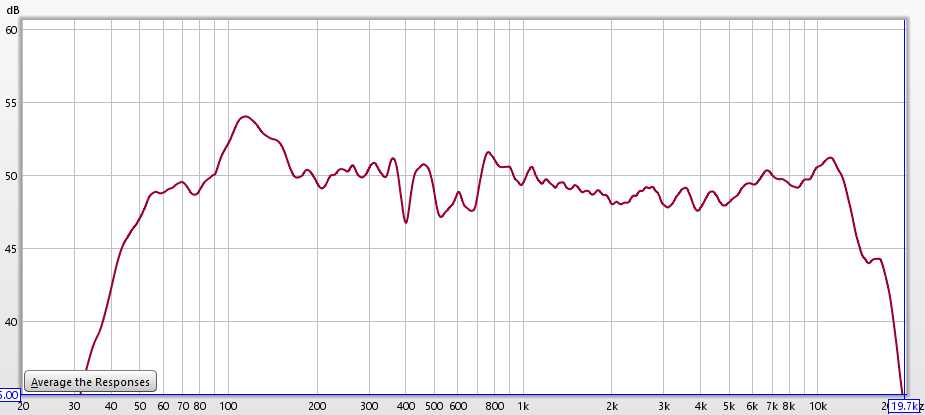
This is the on-axis frequency response of the speaker measured outdoors. Looks pretty good, but nowhere as good as the JBL LSR series. Looks like I was either a little off axis, or wind noise rejection cut the response above 12kHz. There are some chunky peaks around 6kHz and 11kHz, as well as some serious nasty bits in the 600Hz range, and a hump at 120hZ. The bass roll off of 50Hz looks to match the spec, and is not super impressive for such a large driver/box.

This is the same as above, except working the room compensation(0dB,-2dB, -4dB) and High Frequency adjustment(+2dB,0dB,-2dB,-4dB).
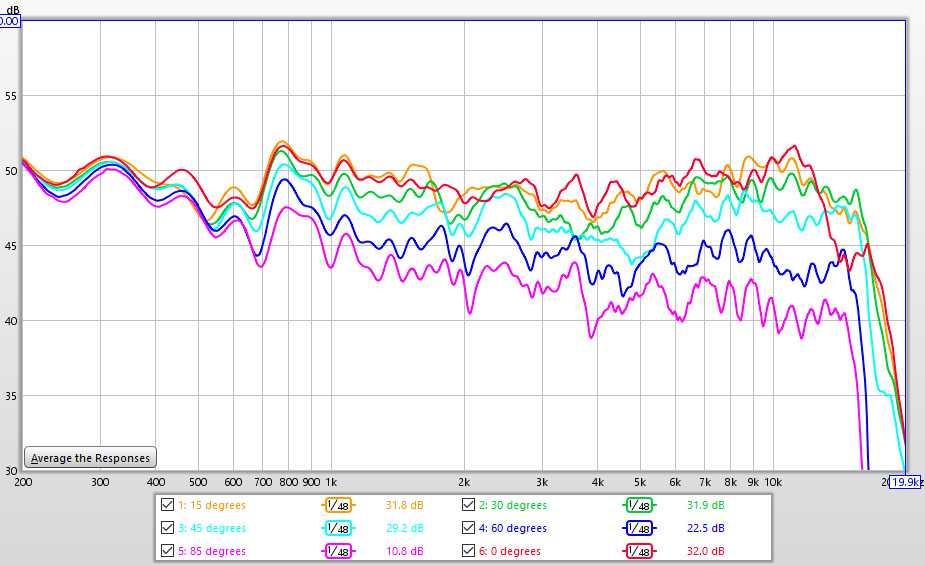
Here is the off-axis response of the speaker from 0-75 degrees in 15 degree increments. Drop off looks pretty uniform, which is a credit to the waveguide doing its job.
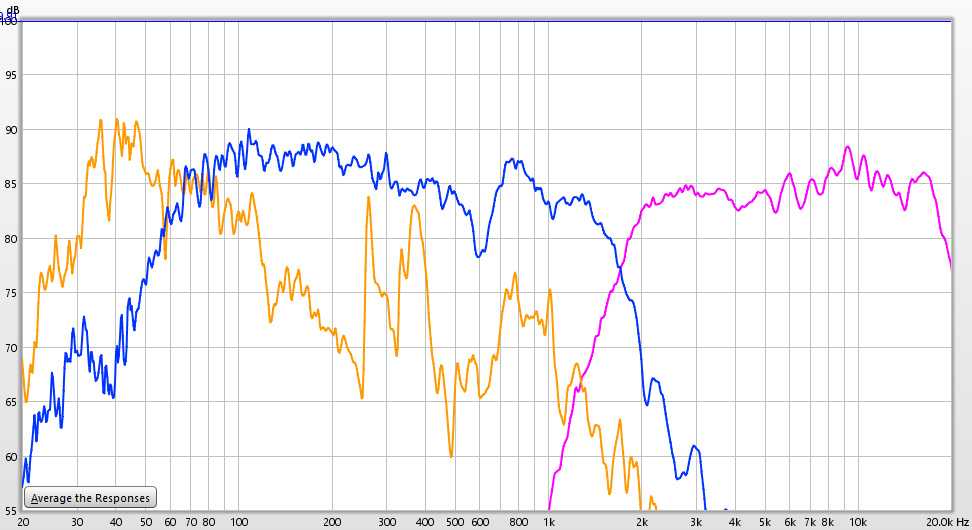
This is close mic measurements of the drivers. This speaker has switch on the back to cut off either the woofer or tweeter, so there is no interference between drivers in this measurement. Crossover point looks pretty low at around 1800Hz, and the slopes appear to be 24dB/octave on the tweeter and 18dB on the woofer.
Tweeter looks a little rough, and I’m guessing the that grill or metal dome has something to do with it.
The woofer has a null at 600Hz and peak at 800Hz. This anomaly is visible in all of the measurements so far. This could be from sound leaking through the pole piece venting and dust cap to cancel out the sound, or it could be diffraction effect from the surround of the woofer, or something else all together.
Ports are putting out a good bit of content in the 30Hz range even though there is not much happening with the speaker at this range, and leaking sound between 250-400Hz. I’m not very impressed by the results of this porting.
Final Thoughts:
In stock form the Truth Monitors provide some of the best mid bass clarity that I’ve heard from a 2 way speaker. It’s a shame that the tweeter is not as good as the one on the JBL’s, and will probably bother you at some point while listening to them. For living room use without DSP correction I would say the Truth monitors are preferred if the JBL LSR308’s don’t get loud enough. Also, if you are a home theater person(I won’t judge) you are going to need a subwoofer if you need deep bass response.
If you are planning for desktop use keep in mind that the Behringer Truth B2031A speakers are huge, and were too big for my tiny desk to get the best imaging. Best placement is probably a little outside of the near field(arm’s reach) and closer to side walls. Downside is that you don’t want too wide of a placement, so you need to sit further back the wider you set the speakers. Placement is going to be a balancing act of compromise, but if you want loud, well built, clean speakers, these fit the bill.
Other content you may like:
- Vanatoo Transparent One Review — Software update brings new standard of performance!
- Lone Star Audio Fest 2018 — Staying up late, drinking too much, smoking like chimneys!
- Andrew Jones goes back the be begining, ELAC B5.2 Debut 2.0 Review is up!
- New Scores for all reviewed speakers — Compare and sort for fun!
- Creative Sound Solutions DIY Solution for the high end — CSS Criton 1TD v2 review is up!
- Dayton Makes a Budget Desktop speaker with a crossover — Dayton Audio MK402 review is up!
- Smaller than small, deeper than deep — iLoud Micro Monitor review is up!
- Vanatoo’s new speaker, The Transparent Zero review is up!
- SVS Prime Bookshelf Review is now available for your viewing pleasure
- ELAC A-Stock UB5 Listening Impressions are up!
- 30 years in the making, the ancient Bose 901 finally gets measured — The Bose 901 review is up!
- Lock and load, we are hitting the bottom of the barrel with both barrels — The Logitech z313 review is up!
- Bulletproof speakers… No, it’s just the B&W 686 S2 Review!
- Declare independence from the British sound! — The KEF Q300 review is up!
- Recommended System Finder — Just in time for the Holidays!
- JBL LSR308 Studio Montor — Super Massive Epic Review!
- Two years after starting this site I finally get around to talking about my stereo.
- Small and cheap speakers transform into retarded and good… Micca COVO-S Review!
- AMT tweeter on a B652? The Dayton B652-AIR is reviewed for great justice!
- JBL LSR305 Studio Monitor Review!
- Zu Essence Review!
Listening Notes:
On a desk the speakers sound large, what that means is that I don’t feel the need to turn them up much at all. The wide baffle means that more of the sound that the speaker is producing is being projected forward. This gives the effect of more music at lower volumes when you are sitting right on top of the speaker in the near field. On the downside it does mean that the imaging is going to be limited, and the speaker will sound like it’s too close.
The speakers are doing the waveguide thing and not projecting any image outside of the width of the speakers. I give up all hope of coupling with the room and toe the speaker a little to try and hit more of the direct sound on the side of my face. The best imaging performance, like most horn/waveguide speakers, is likely to be found using corner placement with lots of toe in. On the plus side, the center image is nailed to the cross, and as solid as any system I’ve heard.
Putting on a familiar test track I hear the midbass is a little thick in the flat setting. Reading the thourogh documentation on the back of the speaker I adjust the bass -4db for the close(slammed) to rear wall placement and noticed the -6db, even though indicated by the markings on the back of the box is not available in the movement of the switch. Regardless I’m able to get the setting I need set and move the chunks of speaker back into position.
As was the case in some early living room tests the speakers produce some of the cleanest bass I’ve heard. There is a bump around 100Hz that gives a tactile sensation for kick drum material. The bass is very tight, and extremely defined. There is no mistaking the bass guitar for a bass drum.

The highs are too much, just a little too live, and maybe slightly on the harsh side. I think the metal dome and waveguide are the culprits, but it could be cone break up from the large woofer. I will need to wait for close mic measurements before I can find out.
Separation of music elements is great, and acoustic guitar clarity is a little overdone.
80’s tracks are more dry than they should be. I would like some more bass gain from the wall to compensate, either that or a little less treble. On the plus side there is a shit ton of clarity. Extremely clean amplification, zero cabinet issues that I can hear, and the whole package is all very impressive for such a relatively unassuming pair of speakers. The Truth monitors are living up to the hype.
While listening through a few other tracks the treble starts to bother me. Not just the quality, but the quantity. Turning again to the literature on the back of the speaker it suggests for a live room, which I definitely have, to knock down the treble 4dB. I give that a shot, but it sounds too muffled. I flip the switch to -2dB, and the clicks and pops of Kraftwerk are now mostly enjoyable instead of anoying. The slight harshness is still there in the in the highest highs, but it’s not too bad.
These speakers are sounding acceptable now. The Behringer Truth monitors are providing a viseral emotionally ready connection. Just bring your tunes and strap in. A good speaker can provide this without going into full retard with the volume knob, and I’m only cranking 85dB and these are making my hair stand on end and skin crawl with quality music performance.
Hack and Slash DIY Modification:
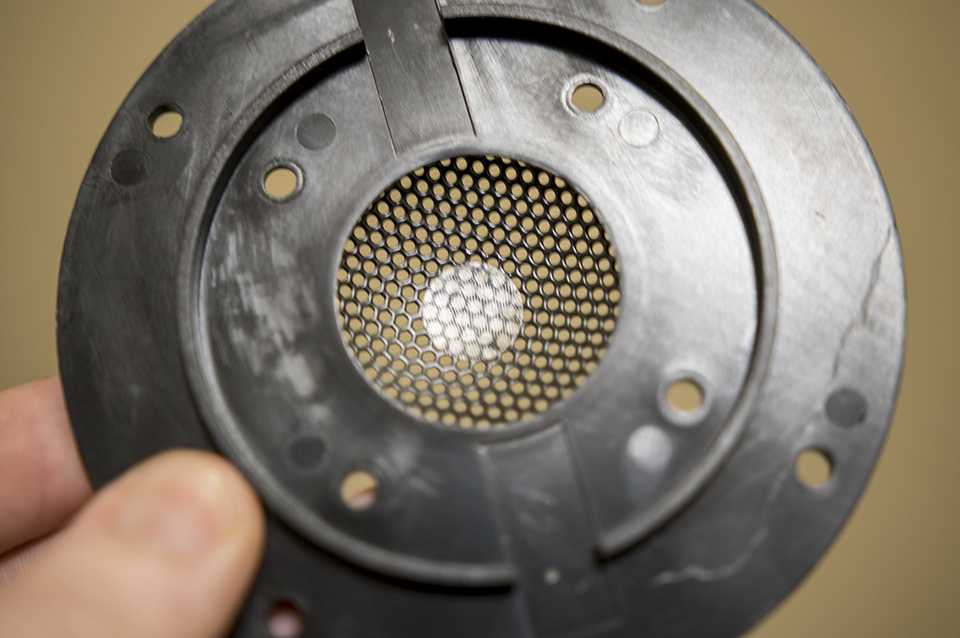
While listening I kept thinking that the tweeter grills were, 1. Retarded, and 2. Getting in the way of the speaker doing its best. Well, I tried paper clips and brute force from the outside, but the tweeter wasn’t having it. Instead I had to disassemble the tweeter driver itself. What I found was surprising. There was not just a metal grill, but also a little circular piece of cellophane tape in the middle of the grill that acts as a diffuser.
I hate diffusers too, so this is modification double plus good in my book.
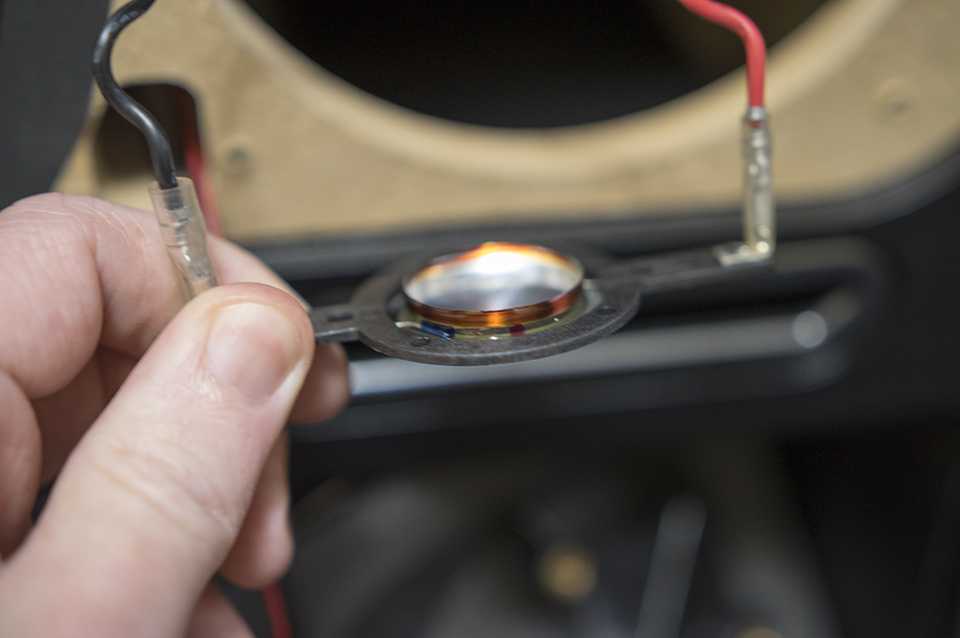
All of the screws are exposed to take the driver apart, so it’s not a hard job, but it is a little nerve racking to pull a voice coil out of a done tweeter. Just make sure you line up the holes with the posts on the motor when putting everything back together.
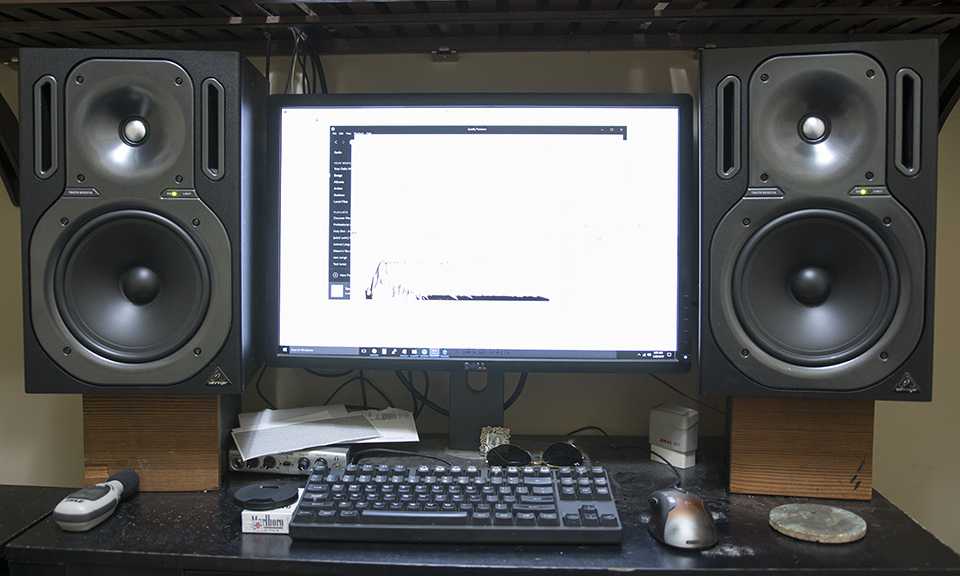
These look 100% better. World class bad ass, letting that titanium get some air.
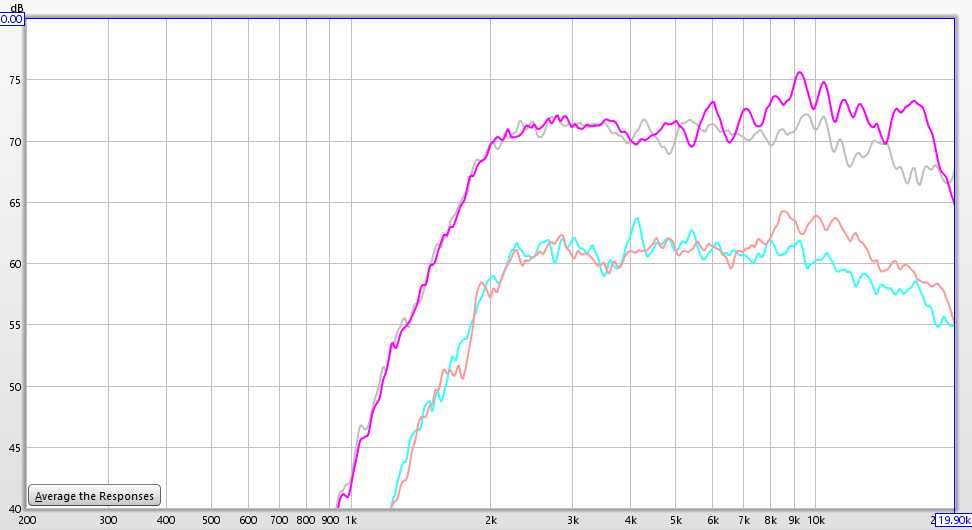
Not only do the speakers look good now, they measure better as well. This is 2 sets of measurements, far and close micing of the tweeter with before and after removing the grill. Removing the grill smoothed out the tweeters response considerably.
Corrected Listening Impressions:
With the grillless tweeter and 29Hz bass extension this speaker is surprisingly not that different than it was for most music. Bass is a little less punchy and instead deeper. Music is a little more clear, and a little more smooth, and a little more refined. Still the tweeter is the weak link on this speaker, and unless you want to try and DIY a soft dome into the speaker or add some felt to the wave guide I don’t this you can fix it. The bass response is still super clean and beats any budget subwoofer I’ve used in the past. Not only that, midbass clarity is not compromised by the added extension. Even in movies the bass is smooth and understated, not a rumble clusterfuck that you get from floppy bass cannons.
DSP Correction:
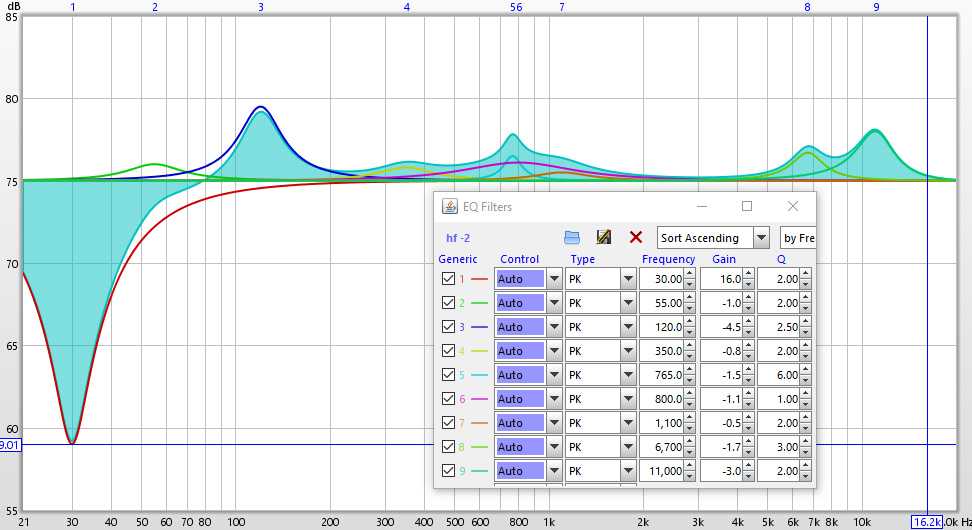
This DSP correction is designed to be used with all the adjustment switches set to 0dB on the back of the speaker.
Let’s talk about that bass boost. Yes I am pushing 16dB of bass boost below the port tuning of the speaker. This does mean that the speaker is more likely to over extend the woofer, but the -3dB point is 28Hz now and that is something very interesting.
How did I get away with this, well there are a couple of things. The speaker is very sensitive to gain, especially when using balanced connections, and has a nice low noise floor. This means that even though I’m cutting 16dB of gain out of the digital signal there is still plenty of room left in the volume knob for making the speakers louder than they should play. The next reason is that these speaker are proper fucking loud. They are speced by Behringer to play 116dB at 1 meter without distortion. That means that with this bass boost you will be limited to only 100dB, which is still really fucking loud.
The rest of the corrections are minor tweaks getting rid of harshness here and there that either showed up in measurements or in listening.
Components:
Waveguide Tweeter
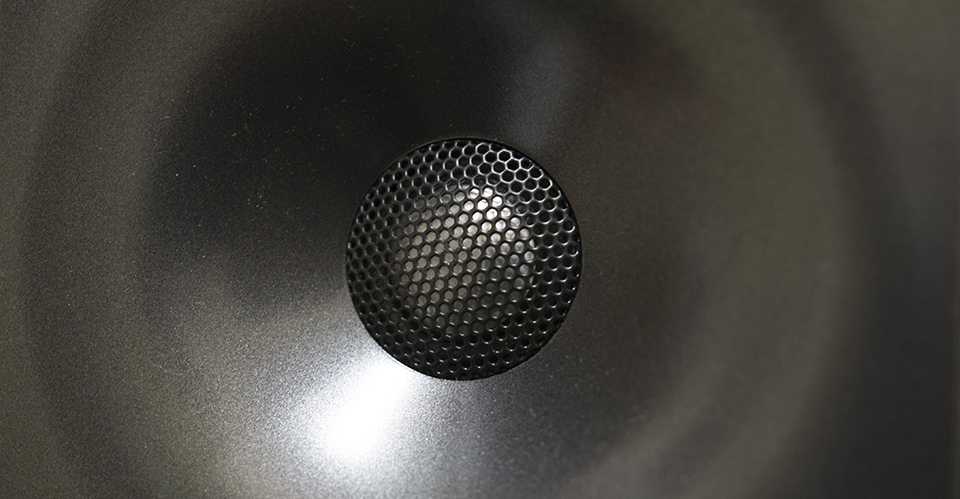
Tweeter is a 1 inch titanium dome with a built in grill and a waveguide that surrounds it. The waveguide is supposed to direct the sound forward and match the dispersion pattern of the woofer. A bit different from a horn which has the dual function of pattern control and making sounds louder.

Back of the tweeter looks pretty good, it’s got a small magnet and a little backing magnet as well. The plastic waveguide seems more sturdy than the one found on the JBL LSR series speakers. Stickers claim 50 watts RMS power handling and 8 ohm impedance.
Woofer
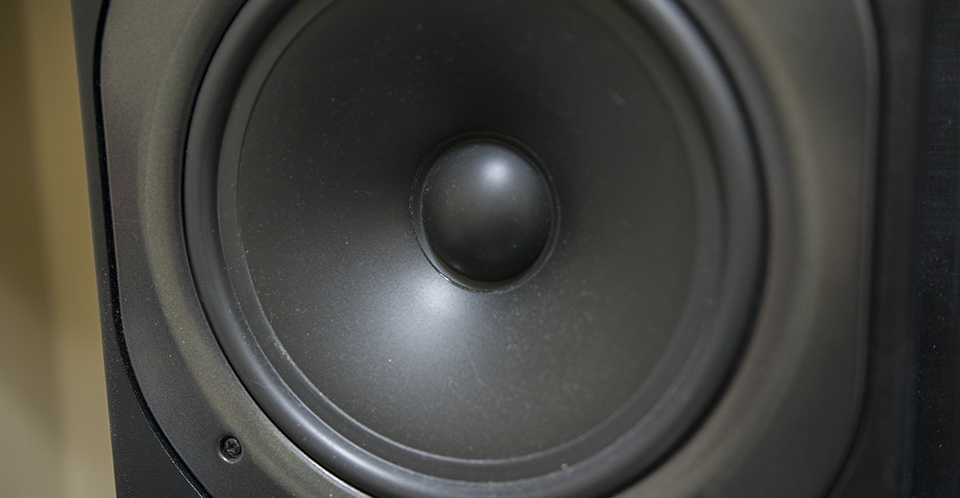
The Behringer Truths got a little dusty waiting to be reviewed. The woofer cone is made of some polypropylene type plastic, and the tiny dust cap is very soft and prone to denting. The surround is a stiff butyl rubber. Given the size of the surround I’m not expecting big excursion from this woofer, but it’s almost 9 inch diameter so won’t need to move as much as smaller drivers. The specs say bass rolls off at 50Hz, and this driver should have no problem hitting that mark.
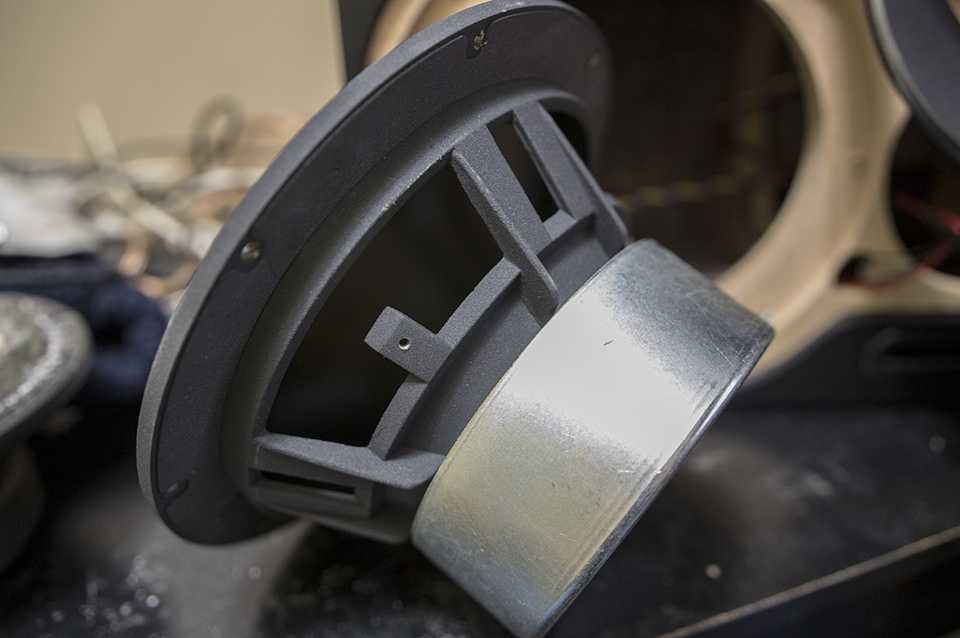
This has to be the most impressive speaker driver I’ve seen in a speaker priced this low. The basket is a massive thick cast aluminum, spider looks quality, and the shielding of the magnet is damn near 100% effective.
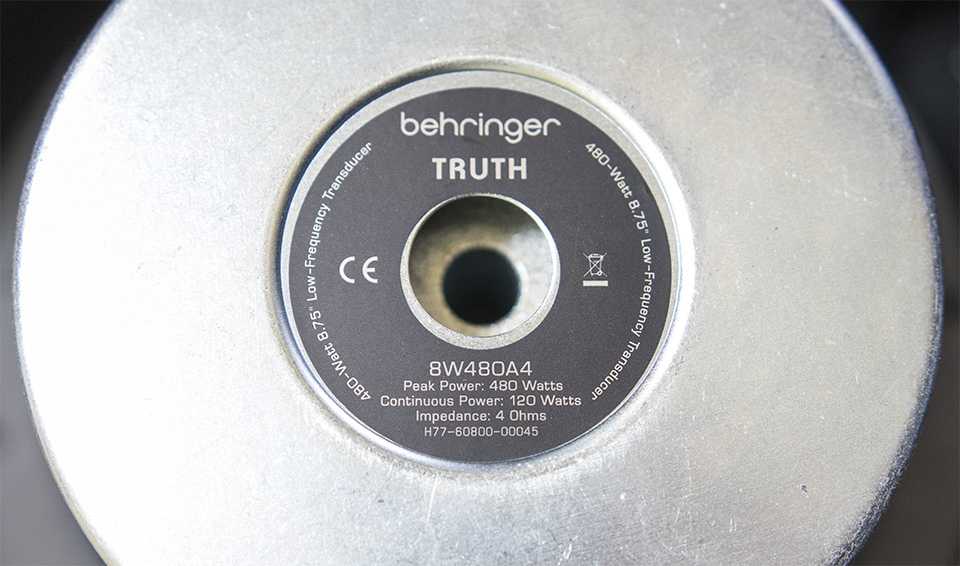
This sticker that has some specs on it is pretty fancy given that the B2031A speakers are not meant to be taken apart. Note the vented pole piece for lower heat buildup, which makes for less distortion and improved power handling.
Amplifier
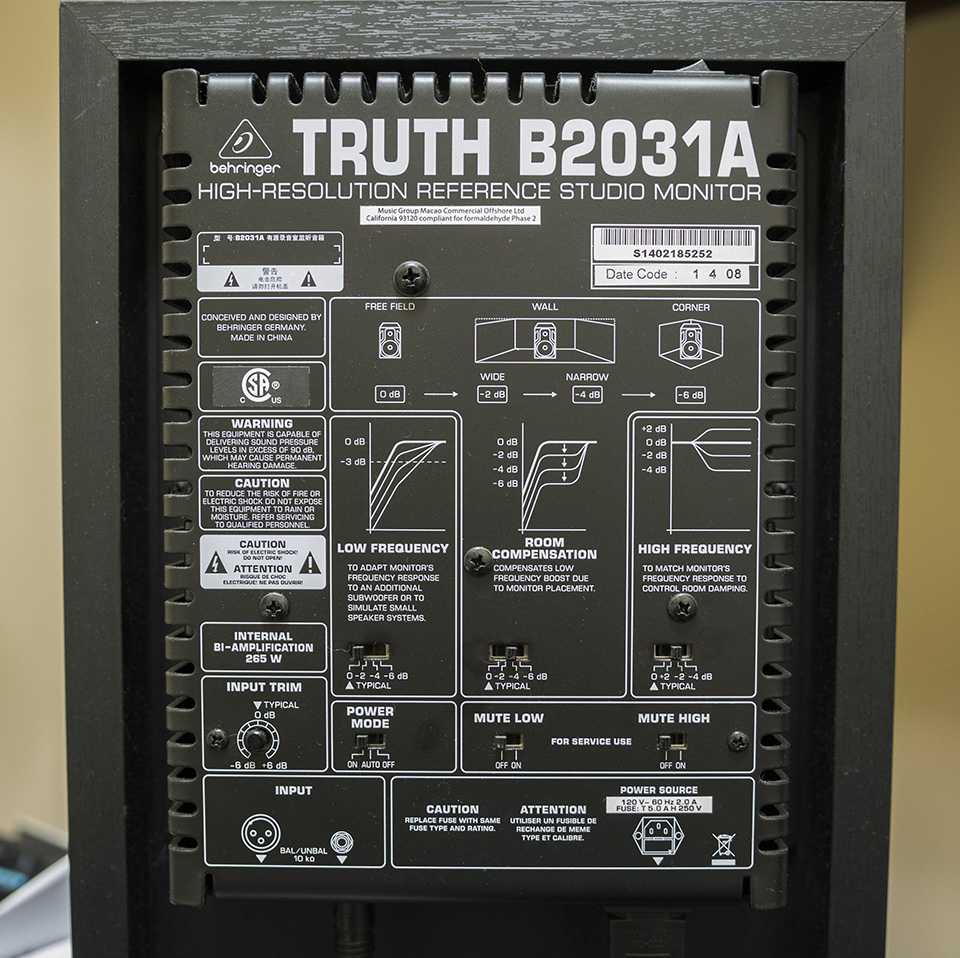
Behringer includes a large manual along with the Truth B2031A speakers, but everything you need to know is painted right on the back of them.
Note that the -6db for Room Compensation, even though indicated by the markings is not available in the movement of the switch. Everything else worked as advertised and is probably easier for you to read from the image than for me to retype.
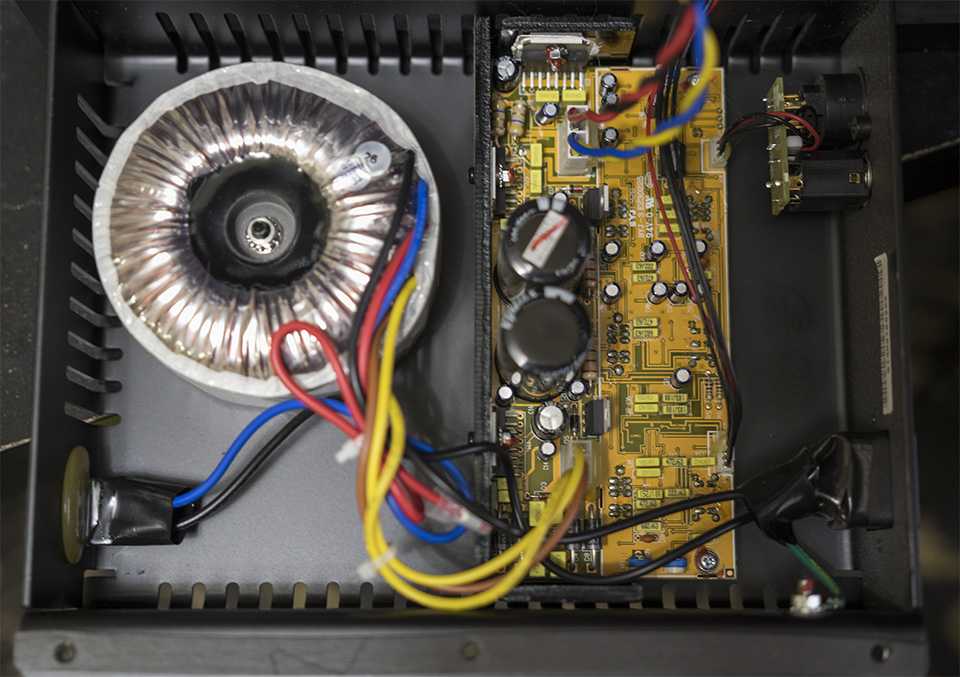
If you know what you are looking at I’ll give you a moment to pick your jaw up off the floor. I know I was awe struck by this sight for at least a good 5 minutes.
What we have here is 3 TDA7293 Class A/B chip by ST, two are run in parallel to power the 4 ohm woofer, the single is powering the tweeter. The shared power supply is using a toroidal transformer, two nice large smoothing caps, and it’s all put together under a very thick sheet metal housing that acts as a heat sink.
If a stereo equivalent of this amp was put on the market by itself I would have no problem paying $150 for it. The quality of the components and soldering looked great, and the fact that this is stuck on the back of a $200 studio monitor is completely absurd.
Cabinet
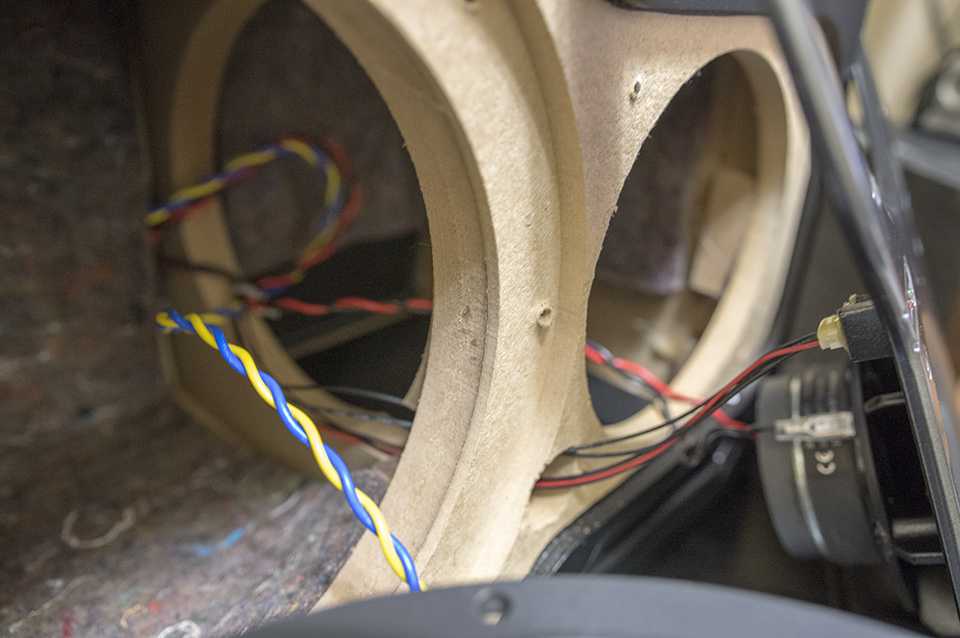
Prepare for more insanity. MDF quality is very nice dense stuff, not the usual chinesium crap. The front baffle is a complicated heavily machined piece which is 1/2 inch behind the tweeter, and 1 1/8″ behind the woofer which is precision flush mounted to the surface. The center brace is a solid 3/4 inch piece and all of the cabinet walls are covered in a thick carpet padding type material. This is a better box than the Infinity Primus, which was over built massively for the price point. I would say that only the B&W 686S2 beats the Behringer Truth’s in cabinet construction quality of reviewed speakers.
Port
The two ports flank the tweeter in an arrangement I have not seen in anything else except the Genelec. The ports themselves seem like thick enough plastic to stay put and not break. I have no idea how these are tuned given bizarre shape and 7 inch depth. I’ll assume that Behringer got this right, or at least copied Genelec without screwing up too much.








































